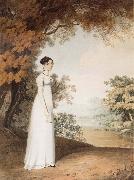 |
Paul Frederick De Caselli -- Click Here
|
|
Swiss, 1775-1817 |
|
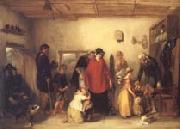 |
Paul Falconer Poole -- Click Here
|
|
(1806 - 1879) , an English painter born in Bristol
an English painter born in Bristol.was an English painter born in Bristol. Though self-taught his fine feeling for colour, poetic sympathy and dramatic power gained for him a high position among British artists. He exhibited his first work in the Royal Academy at the age of twenty-five, the subject being The Well, a scene in Naples. There was an interval of seven years before he next exhibited his Farewell, Farewell in 1837, which was followed by the Emigrant's Departure, Hermann and Dorothea and By the Waters of Babylon. In 1843 his position was made secure by his Solomon Eagle, and by his success in the Cartoon Exhibition, in which he received from the Fine Art Commissioners a prize of 300 sterling. After his exhibition of the Surrender of Syon House he was elected an associate of the Royal Academy in 1846, and was made an academician in 1861. Poole's subjects divide themselves into two orders, one idyllic, the other dramatic. Of the former his May Day (1852) is a typical example. Of both styles there were excellent examples to be seen in the small collection of his works shown at Burlington House in the Winter Exhibition of 1883-1884. Among his early dramatic pictures was Solomon Eagle exhorting the People to Repentance during the Plague of 1665, painted in 1843. To this class belongs also the Messenger announcing to Job the Irruption of the Sabeans and the Slaughter of the Servants (exhibited in 1850), and Robert, Duke of Normandy .and Arietta (1848). Finer examples of his more mature power in this direction are to be found in his Prodigal Son, painted in. 1869; the Escape of Glaucusand lone with the blind girl Nydia from Pompeii (1860); and Cunstaunce sent adrift by the Constable of Alia, King of Northumberland, painted in 1868. More peaceful than these are the Song of Troubadours (painted in 1854) and the Goths in Italy (1851), the latter an important historical work of great, power and beauty. Of a less lofty strain, but still more beautiful in its workmanship, is the Seventh Day of the Decameron, painted in 1857. In this picture Poole rises to his full height as a colourist. In his pastorals he is soft and tender, as in the Mountain Path (1853), the Water-cress Gatherers (1870), the Shepston Maiden (1872). But when he turns to the grander and more sublime views of nature his work is bold and vigorous. |
|
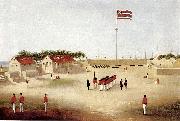 |
Paul Emmert -- Click Here
|
|
Paul Emmert (1826-1867) , who is also known as Paul Emert, was an artist born near Berne, Switzerland in 1826. By 1845, he had become an established artist in New York. He joined the gold rush to California in 1849. The following year he exhibited in Brooklyn a panorama of the gold mining activities before making his second trip to California late in 1850. While in California, he operated the Bear Hotel in Sacramento and exhibited the panorama in San Francisco and other communities. In 1853 he moved to Hawaii where he resided until his death in 1867 in Honolulu.
|
|
|
|
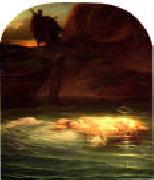 |
Paul Delaroche -- Click Here
|
|
1797-1856
French
Paul Delaroche Locations
Painter and sculptor, son of Gregoire-Hippolyte Delaroche. Though he was offered a post in the Bibliotheque Nationale by his uncle, Adrien-Jacques Joly, he was determined to become an artist. As his brother Jules-Hippolyte was then studying history painting with David, his father decided that Paul should take up landscape painting, and in 1816 he entered the Ecole des Beaux-Arts to study under Louis-Etienne Watelet (1780-1866). Having competed unsuccessfully for the Prix de Rome for landscape painting, he left Watelet studio in 1817 and worked for a time with Constant-Joseph Desbordes (1761-1827). In 1818 he entered the studio of Antoine-Jean Gros, where his fellow pupils included Richard Parkes Bonington, Eugene Lami and Camille Roqueplan. |
|
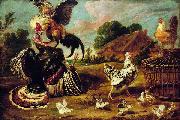 |
Paul de Vos -- Click Here
|
|
(1591e1592, or 1595, Hulst-30 June 1678, Antwerp) was a Flemish Baroque painter.
De Vos was born in Hulst near Antwerp, now in the Dutch province of Zeeland. Like his older brother Cornelis and younger brother Jan, he studied under the little-known painter David Remeeus (1559-1626). He specialized in monumental animal scenes, especially hunts for aristocratic patrons, that are heavily influenced by Frans Snyders (to whom his sister Margaretha was married). De Vos became a master and joined the guild of St. Luke in 1620.
As was frequent amongst artists in Antwerp, De Vos frequently collaborated with other painters. He painted animals in hunting scenes and armor in mythologies by Peter Paul Rubens and his studio. He also worked with Thomas Willeboirts Bosschaert, Erasmus Quellinus II, Anthony van Dyck, and Jan Wildens.
|
|
|
|
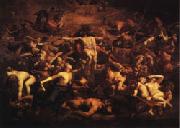 |
Paul Chenavard -- Click Here
|
|
Lyons 1807 - Paris 1895. |
|
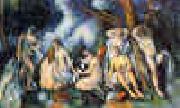 |
Paul Cezanne -- Click Here
|
|
French Post-Impressionist Painter, 1839-1906
During the second half of the 19th century French impressionism created a dramatic break with the art of the past. In conception and appearance the style was radically new and, although it initially inspired public ridicule, it soon affected nearly every ambitious artist in western Europe. The new vision emerged during the 1870s, chiefly in the art of Claude Monet, Auguste Renoir, and Camille Pissarro. For each of these artists impressionism was an illusionistic style which differed from the tradition of Renaissance illusionism in its greater emphasis upon vibrant, natural color and on an immediate confrontation with the phenomena of the visible world.
As the style developed during the 1880s, however, it increasingly became characterized by paintings which were flat rather than illusionistic. In other words, the impressionists insistence upon a direct application of pigment to canvas resulted in surfaces which declared themselves first of all as surfaces - and, consequently, in paintings which declared themselves first of all as paintings rather than as windows which looked out upon the natural world.
The tendency toward flatness persisted into the last years of the 19th century, its pervasiveness giving the impression that illusionistic space - fought for, won, and defended since the very beginning of the Renaissance - had finally been sacrificed by the medium of painting. Paul C??zanne worked within and finally emerged from this trend. As a painter, he matured slowly, his greatest works coming during the last 25 years of his life. During this period he scored a remarkable and heroic achievement: he restored to painting the space and volume that had seemingly been lost to it. But he did it in a totally unprecedented way: not by return to the illusionism of the past but by the creation of a spatial illusionism that did not violate flatness.
C??zanne was born on Jan. 19, 1839, in Aix-en-Provence. His father, Philippe Auguste, was the cofounder of a banking firm which prospered throughout the artist life, affording him financial security that was unavailable to most of his contemporaries and eventually resulting in a large inheritance. In 1852 C??zanne entered the Coll??ge Bourbon, where he met and became friends with Émile Zola. This friendship was decisive for both men: with youthful romanticism they envisioned successful careers in the Paris art world, C??zanne as a painter and Zola as a writer. Consequently, C??zanne began to study painting and drawing at the École des Beaux-Arts in Aix in 1856. His father opposed the pursuit of an artistic career, and in 1858 he persuaded C??zanne to enter law school at the University of Aix. Although C??zanne continued his law studies for several years, he was simultaneously enrolled in the School of Design in Aix, where he remained until 1861.
In 1861 C??zanne finally convinced his father to allow him to go to Paris. He planned to join Zola there and to enroll in the École des Beaux-Arts. But his application was rejected and, although he had gained inspiration from visits to the Louvre, particularly from the study of Diego Vel??zquez and Caravaggio, C??zanne experienced self-doubt and returned to Aix within the year. He entered his father banking house but continued to study at the School of Design.
The remainder of the decade was a period of flux and uncertainty for C??zanne. His attempt to work in his father business was abortive, and he returned to Paris in 1862 and stayed for a year and a half. During this period he met Monet and Pissarro and became acquainted with the revolutionary work of Gustave Courbet and Édouard Manet. C??zanne also admired the fiery romanticism of Eug??ne Delacroix paintings. But he was never entirely comfortable with Parisian life and periodically returned to Aix, where he could work in relative isolation. He retreated there, for instance, during the Franco-Prussian War (1870-1871). |
|
|
|
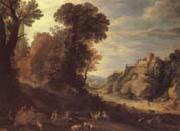 |
Paul Brill -- Click Here
|
|
Flemish painter , 1554-Rome 1626
were brothers, both born in Antwerp, who were landscape painters who worked in Rome after earning papal favor. They are also described as painters of capricci (whims or fancies) or vedute ideate or veduta di fantasia, with typical rustic hills with a few ruins. Mattheus began work on several frescoes in Rome from 1570 onwards, and his work includes the Vatican's Seasons. Mattheus died young, and his brother continued his work around 1574. Paul, a student of Damiaen Oertelmans, painted frescoes such as the landscapes in the Casino Rospigliosi (Rome), and The Roman Forum, which showed this site for what it had become: a slum for squatters and pasture for livestock (so much so that the place was nicknamed Campo Vaccino, or "The Cowfield"). His masterpiece may be a fresco in the Clementine Hall of the Vatican. Paul also did engravings and small cabinet paintings on copper, some of which are signed with a pair of spectacles (a pun on the French word brilles, "spectacles"). Some of these were collaborations with Johann Rottenhammer, who according to a dealer's letter of 1617 painted the figures in Venice and then sent the plates to Rome for Bril to complete the landscape. He collaborated with his friend Adam Elsheimer, who he both influenced and was influenced by, on one painting. |
|
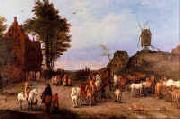 |
Paul Bril -- Click Here
|
|
Flemish Baroque Era Painter, ca.1554-1626
Paul (1554-1626) and Mattheus (1550-1583) Brill (or Bril) were brothers, both born in Antwerp, who were landscape painters who worked in Rome after earning papal favor. They are also described as painters of capricci (whims or fancies) or vedute ideate or veduta di fantasia, with typical rustic hills with a few ruins. Mattheus began work on several frescoes in Rome from 1570 onwards, and his work includes the Vatican Seasons. Mattheus died young, and his brother continued his work around 1574. Paul painted frescoes such as the landscapes in the Casino Rospigliosi (Rome), and The Roman Forum, which showed this site for what it had become: a slum for squatters and pasture for livestock (so much so that the place was nicknamed Campo Vaccino, or The Cowfield). His masterpiece may be a fresco in the Clementine Hall of the Vatican.
Paul also did engravings and small cabinet paintings on copper, some of which are signed with a pair of spectacles (a pun on the French word brilles, spectacles). Some of these were collaborations with Johann Rottenhammer, who according to a dealer letter of 1617 painted the figures in Venice and then sent the plates to Rome for Bril to complete the landscape. He collaborated with his friend Adam Elsheimer, who he both influenced and was influenced by, on one painting (now Chatsworth House) |
|
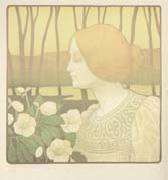 |
Paul Berthon -- Click Here
|
|
A truly gifted illustrator and poster artist ,
French , 1872-1909
French designer and lithographer. He began his training in Villefranche, where he studied painting, and in 1893 he moved to Paris, entering the Ecole Normale d'Enseignement du Dessin. There he became a pupil and disciple of Eug?ne-Samuel Grasset, the Professor of Decorative Arts, and was also influenced by Luc Olivier Merson. Berthon's main output consisted of posters and decorative panels. However, he also produced bookbindings and furniture designs, both of which he exhibited at the Salon in 1895; designs for ceramics for Villeroy & Boch in the late 1890s; and a few designs for the covers of such magazines as L'Image (July 1897) and Poster (May 1899). His work is in an Art Nouveau style, and he adopted that movement's plant and figural motifs, especially the motif of the femme fatale, and also its long sinuous lines. |
|
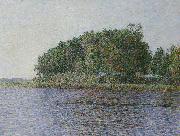 |
Paul Baum -- Click Here
|
|
painted Landschaft in 1896 |
|
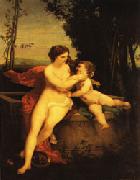 |
Paul Baudry -- Click Here
|
|
French Academic Painter, 1828-1886. Specializes in Portraits
Specializes in Portraits.was a French painter. He studied under Michel Martin Drolling and carried off the Prix de Rome in 1850 by his picture of Zenobia found on the banks of the Araxes. His talent from the first revealed itself as strictly academical, full of elegance and grace, but somewhat lacking originality. In the course of his residence in Italy Baudry derived strong inspiration from Italian art with the mannerism of Correggio, as was very evident in the two works he exhibited in the Salon of 1857, which were purchased for the Luxembourg: The Martyrdom of a Vestal Virgin and The Child. His Leda, St John the Baptist, and a Portrait of Beul, exhibited at the same time, took a first prize that year. Throughout this early period Baudry commonly selected mythological or fanciful subjects, one of the most noteworthy being The Pearl and the Wave (1862). Once only did he attempt an historical picture, Charlotte Corday after the murder of Marat (1861); and returned by preference to the former class of subjects or to painting portraits of illustrious men of his day: Guizot, Charles Garnier, Edmond About. The works that crowned Baudrys reputation were his mural decorations, which show much imagination and a high artistic gift for color, as may be seen. in the frescoes in the Paris Court of Cassation. at the château of Chantilly, and some private residences the Hôtel Fould and Hôtel Paivabut, above all, in the decorations of the foyer of the Opera Garnier. These, more than thirty paintings in all, and among them compositions figurative of dancing and music, occupied the painter for ten years. Baudry was a member of the Institut de France, succeeding Jean-Victor Schnetz. Two of his colleagues, |
|
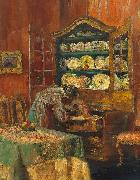 |
Paul Barthel -- Click Here
|
|
painted Interieur mit geoffneter Vitrine in 1862 - 1933 |
|
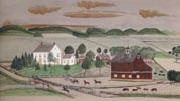 |
Paul A.Seifert -- Click Here
|
|
German-born American painter
b.c.1840-46 d.1921
|
|
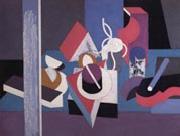 |
Patrick Henry Bruce -- Click Here
|
|
American Cubist Painter, 1881-1936
was an American cubist painter. A descendant of Patrick Henry, Bruce was born in Campbell County, Virginia, the second of four children. His family had once owned a huge plantation, Berry Hill, worked by over 3,000 slaves. Berry Hill is now a resort & conference center outside South Boston, Virginia and is now a National Historic Landmark. Berry Hill Estate originally was part of a 105,000-acre (420 km2) tract granted by the English Crown in 1728 to William Byrd II. The Civil War left the Bruce's wealth greatly diminished. Bruce began taking evening classes at the Art Club of Richmond in 1898, while working in a real estate office during the daytime. His earliest known extant painting dates from 1900. In 1902 he moved to New York, where he studied with William Merritt Chase, Robert Henri, and Kenneth Hayes Miller. By February 1904 he was in Paris, where he would live until 1933. Although his evolution toward a modernist style was gradual, his works of 1908 reveal the influence of Renoir and C??zanne, and in that year he was among the first to enroll in Matisse's school. Bruce exhibited regularly in the Salon d'Automne, and met many of the leading artists of the early twentieth century avant garde. |
|
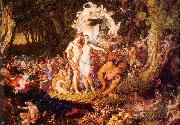 |
Paton, Sir Joseph Noel -- Click Here
|
|
English, 1824-1901
Scottish painter, illustrator, sculptor and collector. From his earliest years he drew avidly, seeking inspiration from ancient history, the Bible and from tales of romance and legend. His father was a keen antiquarian, and his habit of collecting items of historical interest and artistic merit was inherited by his son who amassed a collection, which included arms and armour, now in the National Museum of Scotland, Edinburgh. He used items from the collection in a large number of his paintings such as 'I wonder who lived in there?' (1867; Mrs Eva No?l Findlay priv. col.), the Fairy Raid (1867; Glasgow A.G. & Mus.), In die Malo (1881) and Oskold and the Ell? Maids (1874). After three years as head designer in one of the biggest sewn-muslin factories in Paisley, Strathclyde, Paton went to London in 1842. Although he did not take a studentship at the Royal Academy Schools, it was there that he met John Everett Millais, and they became lifelong friends. He won prizes in the Westminster Hall competitions in 1845 and 1847, |
|
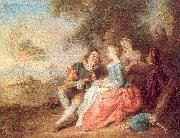 |
Pater, Jean-Baptiste -- Click Here
|
|
French Rococo Era Painter, 1695-1736
French painter and draughtsman. He was taught in Valenciennes by Jean-Baptiste Guid? (master 1697; d 1711) and also by his father, Antoine Pater (1670-1747), a sculptor whose portrait was painted by Antoine Watteau (Valenciennes, Mus. B.-A.), who was also a native of Valenciennes. He probably followed Watteau to Paris after the short stay that the latter made in Valenciennes around 1710. Pater thus became a pupil of Watteau. Watteau's difficult character led to Pater's dismissal. He then spent a few hard years on his own in Paris, before returning to Valenciennes around 1715 or 1716. He tried to work independently of the local corporation of St Luc, of which he was not a member; a number of comical legal difficulties ensued, and Pater returned to Paris in 1718. There he must have been in contact with Watteau, since he worked for some of the latter's clients, such as the dealers Pierre Sirois and Edm?-Fran?ois Gersaint, and the collector Jean de Jullienne. In the spring of 1721 the dying Watteau called Pater to him at Nogent, near Paris, apparently full of remorse for his previous attitude and wishing to instruct him in the basic tenets of his painting, |
|
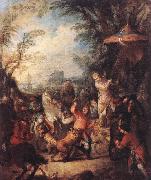 |
PATER, Jean Baptiste Joseph -- Click Here
|
|
French Rococo Era Painter, 1695-1736 |
|
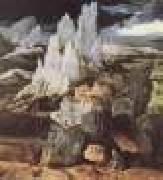 |
PATENIER, Joachim -- Click Here
|
|
Flemish painter (b. ca. 1480, Bouvignes, d. 1524, Antwerpen).
|
|
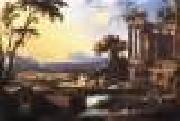 |
PATEL, Pierre -- Click Here
|
|
French Baroque Era Painter, ca.1605-1676
He dedicated himself exclusively to the art of landscape painting, and it is presumed that he spent his entire career in Paris, as there is no evidence to support claims that he went to Italy. In 1633-4 he was admitted to the guild of St Germain-des-Pres and in 1635 was admitted to the Academie de Saint-Luc. In 1651 he took part in a vain attempt to merge the Academie Royale and the Academie de Saint-Luc |
|
|
|
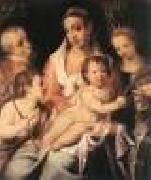 |
PASSEROTTI, Bartolomeo -- Click Here
|
|
Italian Painter, 1529-1592 |
|
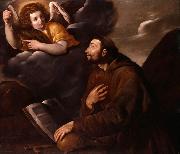 |
Pasquale Ottino -- Click Here
|
|
(Verona, 1578 - Verona, 1630) was an Italian painter.
Born in Verona in 1578, Ottino learned his trade in the workshop of Felice Brusasorci together with Alessandro Turchi, known as Orbetto, with whom he completed the Fall of Manna in the church of San Giorgio in Braida, left unfinished on the masteres death in 1605. His early works attest to the decidedly Mannerist character of the initial phase of his career. The sources indicate fairly constant activity in his hometown, even though there are still some doubts as to the reconstruction of his artistic career, especially incongruities regarding a trip to Rome that may have taken place with his companions Turchi and Bassetti around 1615. He died of plague in Verona in 1630.
|
|
 |
Pasquale Liotta -- Click Here
|
|
Italian, 1850 - 1912 |
|
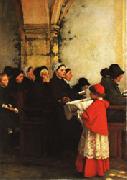 |
Pascal Dagnan-Bouveret -- Click Here
|
|
(January 7, 1852 - July 3, 1929), was one of the leading French artists of the academic school. He was born in Paris, the son of a tailor, and was raised by his grandfather after his father emigrated to Brazil. Later he added his grandfatheres name, Bouveret, to his own.
From 1869, he studied at the Ecole des Beaux-Arts under Alexandre Cabanel and Jean-Leon Gerôme. In 1873, he opened his own studio with a fellow student Gustave-Claude-Etienne Courtois. From 1875, he exhibited at the Salon, where in 1880 he won the first-class medal for the painting An Accident, and a medal of honour in 1885 for Horses at the Watering Trough.
From the 1880s, Dagnan-Bouveret along with Gustave Courtois, maintained a studio in Neuilly-sur-Seine, a fashionable suburb of Paris. By that time he was recognized as a leading modern artist known for his peasant scenes, but also for his mystical-religious compositions. His large-scale painting The Last Supper was exhibited at the Salon de Champ-de-Mars in 1896.[1] He also painted portraits for wealthy clients including the British collector George McCulloch. He was one of the first to use the then new medium of photography to bring greater realism to his paintings.
In 1891, he was made an Officer of the Legion of Honour; in 1900 he became a member of the Institut de France.
|
|
|
|
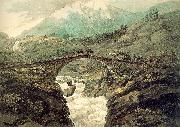 |
Pars, William -- Click Here
|
|
English, 1742-82
English painter. He first established himself in London as a portrait painter, exhibiting at the Society of Artists in 1760 and at the Free Society of Artists from 1761. In 1764 he won the third premium of the Royal Society of Arts for his history painting depicting Caractacus before the Emperor Claudius (untraced). In the same year he was selected by the Dilettanti Society to accompany Richard Chandler and Nicholas Revett on an archaeological expedition to Asia Minor and Greece (1764-6). His views of Classical monuments in Asia Minor were engraved and published in Ionian Antiquities (1769), while those he made in Greece, which included pioneering drawings of the Parthenon sculptures, were used in the second volume of James Stuart's Antiquities of Athens (1777). |
|
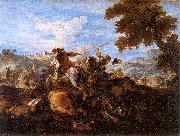 |
Parrocel, Joseph -- Click Here
|
|
French, 1646-1704
He studied with his father Barthelemy Parrocel (1595-1660) and then with his elder brother Louis Parrocel (1634-94). He went to Paris for four years to perfect his work and then, c. 1667, to Rome, where he became the pupil of the battle painter Jacques Courtois and was influenced by Salvator Rosa. He remained in Italy for eight years and stayed for a time in Venice, before returning to settle in Paris in 1675. He was approved (agree) by the Academie Royale de Peinture et de Sculpture in February 1676 and received as a full member in November of the same year, presenting the Siege of Maastricht (Draguignan, Mus. Mun.). His painted oeuvre consists principally of military scenes, particularly battles, and he received numerous royal commissions. In the period 1685-8 he executed 11 paintings for the Salle du Grand Couvert at the cheteau of Versailles (nine in situ; one in Tours, Mus. B.-A.; one in Dijon, Mus. B.-A.); in 1699 he painted the Crossing of the Rhine (Paris, Louvre.) for the cheteau of Marly, Yvelines, and in 1700 he executed the Fair at Bezons (Tours, Mus. B.-A.), anticipating the fetes galantes of Antoine Watteau. He was also the author of a number of hunting scenes . His most important religious paintings were the May of Notre-Dame de Paris of 1694, St John the Baptist Preaching (Arras, Mus. B.-A.) and St Augustin Succouring the Sick (c. 1703; Nantes, Mus. B.-A.), which was intended for the monastery in the Place des Victoires in Paris. He also contributed battle scenes to the backgrounds of portraits by Hyacinthe Rigaud and by Gabriel Blanchard. His technique was highly original in the context of his time; he employed a very free style of execution and used thick impasto and intense colours. He was also a prolific engraver, producing around 100 plates, |
|
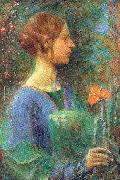 |
Parrish, Clara Weaver -- Click Here
|
|
American, 1861-1925 |
|
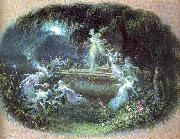 |
Parris, Edmund Thomas -- Click Here
|
|
English, 1793-1873 |
|
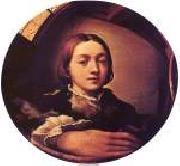 |
PARMIGIANINO -- Click Here
|
|
Italian Mannerist Painter, 1503-1540
Italian painter, draughtsman and printmaker. Beginning a career that was to last only two decades, he moved from precocious success in the shadow of Correggio in Parma to be hailed in the Rome of Clement VII as Raphael reborn. There he executed few large-scale works but was introduced to printmaking. After the Sack of Rome in 1527, he returned to northern Italy, where in his final decade he created some of his most markedly Mannerist works. Equally gifted as a painter of small panels and large-scale frescoes both sacred and profane, he was also one of the most penetrating portrait painters of his age.
|
|
|
|
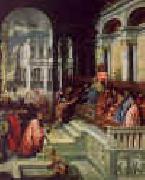 |
Paris Bordone -- Click Here
|
|
Italian
1500-1571
Italian painter and draughtsman. He is best known for his strikingly beautiful depictions of women, both in portraits and in cabinet paintings. He also excelled in rendering monumental architectural settings for narrative, both religious and secular, possibly initiating a genre that would find great currency during the mid-16th century, especially in Venice, France and the Netherlands. His favoured media were oil and fresco, the latter being used on both interiors and faades. Although he was not generally sought after by Venetian patrons during his career, as his art was eclipsed by that of Titian, Paolo Veronese and Jacopo Tintoretto, Bordone was regarded in the mid-16th century as an accomplished artist (Pino; Sansovino). He worked for the moneyed lite of northern Italy and Bavaria, for the royalty of France and Poland, and had works commissioned to be sent to Spain and to Flanders. Despite knowledge of the important patrons for whom he worked, the chronology of Bordones oeuvre is by no means clear. Dating on stylistic grounds is confounded by the diverse sources on which he drew, ranging from the Emilian, Lombard and Venetian to the French and northern European, depending on the patron. Due to the ease with which prints circulated during Bordones career, it is difficult to ascertain whether influences were derived at first hand or from printed images. Such difficulties in assigning dates are further exacerbated by his use of the same figure study for numerous paintings evidently executed decades apart. Reliance on the testimony of Vasari, who interviewed Bordone in 1566, in conjunction with the extant documents, the few signed and dated paintings and, to a lesser extent, period fashion provides only a rough outline of his activity. Due to the lack of agreement among scholars regarding chronology, the following account is based mainly on the documentary evidence. |
|
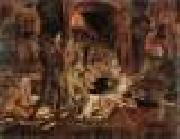 |
PARENZANO, Bernardino -- Click Here
|
|
Italian painter, Paduan school (b. ca. 1450, Parenzo, d.
ca. 1500, Vicenza). |
|
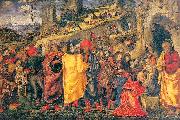 |
Parentino, Bernardo -- Click Here
|
|
Italian Painter, 1437-1531
was an Italian painter of the Renaissance period, active mainly in Padua. Born in Parenzo, then a Venetian town in Istria and died in Vicenza. He was influenced, if not a pupil, of the painter Andrea Mantegna. He became an Augustinian monk under name of Lorenzo. He painted Scenes of the life of San Benedetto for the cloister of Santa Giustina at Padua, and a Nativity once at the Accademia in Venice. He painted a nightmarish Temptation of St. Anthony Abbot found at the Doria Pamphilj Gallery. An Adoration of the Magi |
|
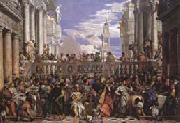 |
Paolo Veronese -- Click Here
|
|
Italian Mannerist Painter, ca.1528-1588
Italian painter and draughtsman. With Titian and Tintoretto he makes up the triumvirate of great painters of the late Renaissance in Venice. He is known as a supreme colourist and for his illusionistic decorations in both fresco and oil. His large paintings of biblical feasts executed for the refectories of monasteries in Venice and Verona are especially celebrated. He also produced many altarpieces, history and mythological paintings and portraits. His compositional sketches in pen, ink and wash, figure studies in chalk, and chiaroscuro modelli and ricordi form a significant body of drawings. |
|
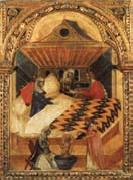 |
Paolo Veneziano -- Click Here
|
|
Italian Byzantine Style Painter, active 1333-ca.1360 |
|
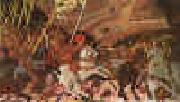 |
Paolo Ucello -- Click Here
|
|
1395-1475
Italian Paolo Ucello Gallery |
|
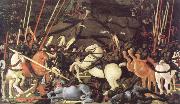 |
paolo uccello -- Click Here
|
|
(b Florence, c. 1397; d Florence, 10 Dec 1475). Italian painter, draughtsman, mosaicist and designer of stained glass. His work vividly illustrates the principal issues of Florentine art during the first half of the 15th century. Trained within the tradition of the Late Gothic style, he eventually became a leading exponent of the application of linear perspective based on the mathematical system established by Filippo Brunelleschi and Leon Battista Alberti. It is the merging of these two diametrically opposed tendencies that forms the basis of Uccello's style. As well as painting on panel and in fresco (many of his works in this medium have been severely damaged), he was also a master mosaicist and produced designs for stained glass.
|
|
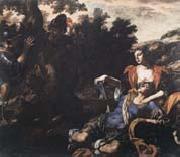 |
Paolo Finoglio -- Click Here
|
|
the Neapolitan painter
1590-1645 |
|
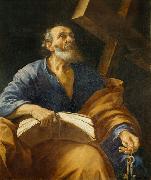 |
Paolo Emilio Besenzi -- Click Here
|
|
(1608-1656) was an Italian painter of the 17th century, born and active in Reggio. He trained with Francesco Albani. Friend and companion of Lionello Spada, he painted for the church of San Pietro. He was also known as sculptor and architect.
|
|
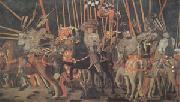 |
Paolo di Dono called Uccello -- Click Here
|
|
Florence 1397-1475 |
|
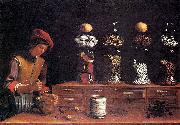 |
Paolo Antonio Barbieri -- Click Here
|
|
(1603-1649) was an Italian painter who was the brother of Guercino. He was born at Cento, a village near Bologna. The subjects of his pictures are flowers, fruit, and game, but he particularly excelled in painting fish |
|
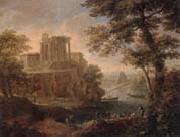 |
Paolo Anesi -- Click Here
|
|
Italian ,
Romer 1697-1773
Italian painter, draughtsman and engraver. He was the son of Pietro Anesi, a silk weaver from Venice. Paolo studied figure painting with Giuseppe Chiari and, in 1715, landscape painting with Bernardino Fergioni (1674-?1738), who was also teaching Andrea Locatelli at that time. Sebastiano Conca was another of Anesi's teachers. In 1723 Anesi married the daughter of the architect Giuseppe Sardi. His earliest known work is a drawing (1719; Florence, Uffizi), but he made his reputation with the only known example of his engraved work: Varie vedute inventate ed intagliate, dedicated to Cardinal Giuseppe Renato Imperiali and published in Rome in 1725. |
|
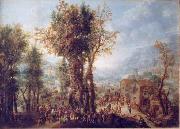 |
Paolo Alboni -- Click Here
|
|
(1671-1734), also called Paolo Antonio Alboni, was an Italian painter of the late-Baroque period. He was born and trained in Bologna, where he became a landscape painter. After practicing some time in Rome and Naples, he went in 1710 to Vienna, where he remained nearly thirteen years, but being deprived of the use of his right side by a stroke, he returned to Bologna; he subsequently painted with his left hand. His daughter, Luigia Maria Rosa, was also a landscape painter. She died in 1759.
|
|
 |
Paolo Veronese -- Click Here
|
|
1528-1588
Paolo Veronese Galleries
Italian painter and draughtsman. With Titian and Tintoretto he makes up the triumvirate of great painters of the late Renaissance in Venice. He is known as a supreme colourist and for his illusionistic decorations in both fresco and oil. His large paintings of biblical feasts executed for the refectories of monasteries in Venice and Verona are especially celebrated. He also produced many altarpieces, history and mythological paintings and portraits. His compositional sketches in pen, ink and wash, figure studies in chalk, and chiaroscuro modelli and ricordi form a significant body of drawings. He headed a family workshop that remained active after his death. |
|
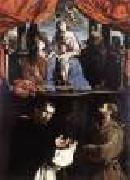 |
PAOLINI, Pietro -- Click Here
|
|
Italian painter, Lucchese school (b. 1603, Lucca, d. 1681, Lucca)
Italian painter. He was the son of Tommaso Paolini and Ginevra Raffaelli, both from Lucca. In 1619 Paolini's father sent him to study under Angelo Caroselli in Rome. His artistic formation was also influenced by the circle of Italian and, especially, northern European followers of Bartolomeo Manfredi, who were active in Rome between 1620 and 1630. The following works, though undocumented, may be dated to this Roman period: Martha and Mary Magdalene (Rome, Gal. Pallavicini), the Concert of Female Musicians (Malibu, CA, Getty Mus.) and the Bacchic Concert (Dallas, TX, Hoblitzelle priv. col., see Maccari Giusti, pl. 3). Paolini's first religious works, such as the Deposition (Lucca, S Frediano), as well as many portraits, also show signs of Roman influence. Around 1628 he went to Venice, where he stayed for two years. The effects of this visit can be seen in his later religious works, such as the Virgin and Saints (Rome, Pal. Barberini) and the Virgin and Saints (Lucca, Villa Guinigi), and also in his history paintings, such as Esther and Ahasuerus (Denver, CO, A. Mus.). He returned to Lucca in 1631, where, from these early experiences, he created an original style, in which he painted cabinet pictures, often on musical or allegorical themes, such as the Ages of Life (Lucca, Mazzarosa priv. col., see Maccari Giusti, pl. 10) and the series Music, Astronomy, Geometry, Philosophy (Lucca, Bertocchini Dinucci priv. col., see Maccari Giusti, pls 56-9). Around 1650 he opened, at his own expense, an academy based on the principle of 'art from nature', at which numerous artists, such as Girolamo Scaglia (d c. 1686), Antonio Franchi, Simone del Tintore and his brother Francesco (1645-1718) were trained. |
|
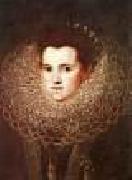 |
PANTOJA DE LA CRUZ, Juan -- Click Here
|
|
Spanish Painter, 1553-1608
Spanish painter. He must have moved to Madrid when he was very young, receiving his training in the workshop of Alonso S?nchez Coello, painter to Philip II. On numerous occasions he declared himself to be a follower of S?nchez Coello, in whose workshop he was an oficial, and he probably collaborated to a considerable degree on many of his master's mature works. There are very few signed works by Pantoja from before the death of S?nchez Coello, although some anonymous paintings from the workshop are probably by him. In Madrid in 1587 Pantoja married a woman of some means, and by the following year, when S?nchez Coello died, he was an independent painter, aspiring to his master's position. Documentation exists from 1590 concerning portraits by Pantoja of members of the royal family including one of Don Felipe, the future Philip III (1593; Vienna, Ksthist. Mus.). On Philip's accession to the throne in 1598 Pantoja painted another portrait of him (Vienna, Ksthist. Mus.) and became the official portrait painter for the court and for the nobility of Madrid; there is detailed documentation for his work from this time. He painted clothing and jewels with precision, in minute detail and with a dry objectivity in the Flemish tradition. His treatment of faces, however, clearly reveals his study of Venetian portraiture, and in particular that of Titian, as well as sharp psychological penetration. In his portraits of royal children he maintained, albeit with a certain rigidity, the charm that S?nchez Coello in his paintings had given these infant figures tightly swathed in official robes |
|
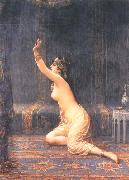 |
Pantaleon Szyndler -- Click Here
|
|
painted Slave woman in 1846 - 1905 |
|
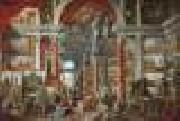 |
PANNINI, Giovanni Paolo -- Click Here
|
|
Italian Neoclassical Painter, ca.1691-1765
was an Italian painter and architect, mainly known as one of the vedutisti or (veduta, or "view painters"). As a young man, Pannini trained in his native town of Piacenza as a stage designer. In 1711, he moved to Rome, where he studied drawing with Benedetto Luti and became famous as a decorator of palaces, including the Villa Patrizi (1718C1725) and the Palazzo de Carolis (1720). As a painter, Pannini is best known for his vistas of Rome, in which he took a particular interest in the city's antiquities. Among his most famous works are the interior of the Pantheon, and his vedute paintings of picture galleries containing views of Rome. Most of his works, specially those of ruins have a substantial fanciful and unreal embellishment characteristic of capriccio themes. In 1719, Pannini was admitted to the Congregazione dei Virtuosi al Pantheon. He taught in Rome at the Accademia di San Luca and the Academie de France, where he influenced Jean-Honore Fragonard. His studio included Hubert Robert and his son Francesco Panini. His style would influence a number of other vedutisti, such as his pupil Antonio Joli, as well as Canaletto and Bernardo Bellotto, |
|
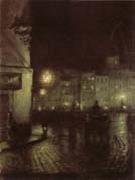 |
Pankiewicz, Jozef -- Click Here
|
|
1866-1940
Jozef Pankiewicz (Lublin November 29 1866 - July 4 1940) was a Polish painter, graphic artist, and pedagogue. In his summer years he studied under Wojciech Gerson and Alexander Kaminski. He travelled to Saint Petersburg with Władysław Podkowinski after winning a scholarship to the Imperial Academy of Arts there. In 1889, both artists left for Paris. |
|
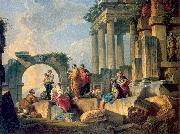 |
Panini, Giovanni Paolo -- Click Here
|
|
Italian Neoclassical Painter, ca.1691-1765
Italian painter, architect and stage designer. He was a highly prolific and versatile painter, best known for his numerous vedute of Rome, many of which focused on the remnants of the city's Classical past. Ceremonies and festivals often feature in his vedute, which thus constitute a lively documentation of contemporary topography, lifestyle and customs. In contrast to Bernardo Bellotto and Gaspar van Wittel, his treatment is picturesque rather than rigorous; he liked to enliven and animate his views by adding numerous figures. He worked exclusively in Rome and by the end of his career was the head of a thriving workshop that included the Frenchman Hubert Robert (in Rome from 1754) and Panini's son Francesco Panini (b 1738). |
|
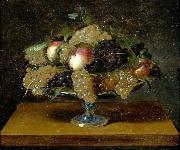 |
Panfilo Nuvolone -- Click Here
|
|
(1581-1651) was an Italian painter of the Mannerist period, who painted both religious and still life topics, active in Cremona and Mantua.
Born to a Mantuan gentleman, he was the father of a family of Cremonese painters. In that town, he apprenticed with Giovanni Battista Trotti (known as il Malosso). Afterwards he moved to Milan, where frescoe church ceilings, and painted altarpieces and still lifes.
One of his few documented still lifes depict a bowl of peaches, and recalls the near-contemporary paintings of fruit bowls in Milan, including the 1594-98 painting in the Ambrosiana by Caravaggio and similarly themed paintings by Fede Galizia. His son, Carlo Francesco Nuvolone, also a prominent in painter in Lombardy. Panfilo's younger son Giuseppe Nuvolone also a painter. Giuseppe's son Carlo was a mediocre quadratura specialist active mainly around Cremona. |
|
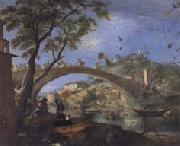 |
Pandolfo Reschi -- Click Here
|
|
(b Gdansk, c. 1640; d Florence, 1696).
Polish painter, active in Italy |
|
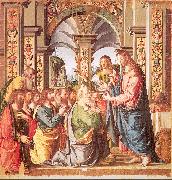 |
Palmezzano, Marco -- Click Here
|
|
Italian, Approx. 1459-1539
.Italian painter. His earliest work was probably on the fresco decoration (c. 1480-84) of the vault of the sacristy of the treasury in the Santa Casa, Loreto, designed by Melozzo da Forl?. He then probably went to Rome, where he may have painted the fresco in the apse of Santa Croce in Gerusalemme (Longhi). In 1493 Palmezzano is documented working with Melozzo on the fresco decoration in the Feo Chapel, |
|
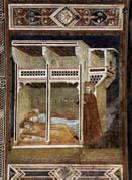 |
PALMERINO DI GUIDO -- Click Here
|
|
Italian painter
active around 1300 |
|
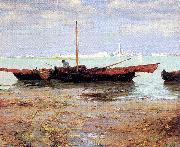 |
Palmer, Walter Launt -- Click Here
|
|
American, 1854-1932 |
|
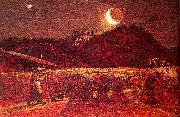 |
Palmer, Samuel -- Click Here
|
|
English, 1805-1881
English painter, draughtsman and etcher. Palmer was a key figure of English Romantic painting who represented, at least in his early work, its pastoral, intuitive and nostalgic aspects at their most intense. He is widely described as a visionary and linked with his friend and mentor William Blake, though he stood at an almost opposite extreme in his commitment to landscape and his innocent approach to its imagery. |
|
|
|
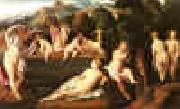 |
Palma Vecchio -- Click Here
|
|
1480-1528
Italian
Palma Vecchio Gallery
His birthdate is calculated on Vasari testimony (1550) that he died aged 48. By March 1510 he was in Venice, where he spent his working life. The stylistic evidence of his earliest works suggests that he was apprenticed to fellow Bergamasque artist Andrea Previtali, who had studied under Giovanni Bellini. A signed Virgin Reading (1508-10; Berlin, Gemeldegal.), which may be Palma Vecchio earliest surviving painting, is strongly reminiscent of his teacher. Previtali returned to Bergamo in 1511, and the main corpus of Palma work can be dated from this time. Palma Vecchio oeuvre reflects the change from an early to a high Renaissance conception of the human figure in secular and religious art. He specialized in certain themes that became established in the repertory of genres of the Venetian school in the generation after him. The principal of these were the wide-format SACRA CONVERSAZIONE |
|
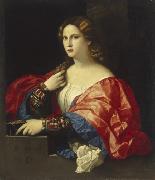 |
Palma il Vecchio -- Click Here
|
|
(c. 1480 - July 1528), born Jacopo Palma or known as Jacopo Negretti, was an Italian painter of the Venetian school born at Serina Alta near Bergamo. He is called Palma Vecchio in English ("Old Palma" - in Italian Palma il Vecchio) to distinguish him from Palma Giovane, his great-nephew.
When Palma arrived in Venice early in the 16th century, he reputedly was a companion and competitor of Lorenzo Lotto, and to some extent a pupil of Titian. He may also have taught Bonifazio Pitati and influenced Giovanni Busi. Palma's earlier works betray the influence of the Bellini. |
|
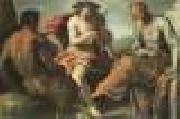 |
PALMA GIOVANE -- Click Here
|
|
Italian Mannerist Painter, ca.1548-1628
Son of Antonio Palma. A greater artist than his father, his vast oeuvre represents the impact of central Italian Mannerism but principally of Jacopo Tintoretto on Venetian painting in the generation after Titian, Tintoretto and Paolo Veronese. He died in his late seventies and was occasionally referred to as 'il vecchio', but since the 17th century he has been known as 'il giovane' to distinguish him from his great uncle. He was virtually self-taught, apart from a presumed acquaintance with his father's workshop. In 1567 he came to the attention of Guidobaldo II della Rovere, Duke of Urbino, who was to support him for four years. A possible knowledge of Federico Barocci's art at the court of Urbino left little trace on his surviving early works. The Duke sent him to Rome for study, where he spent a few months apprenticed to an unknown artist. There his sympathy was with Taddeo Zuccaro and Federico Zuccaro, who influenced the graphic style of the drawing of Matteo da Lecce (1568; New York, Pierpont Morgan Lib.), his first dated work. His Roman sojourn, which lasted until c. 1573-4, made a direct impact on some of his Venetian works and indirectly made him receptive to Tintoretto's style. A tendency in Rome in the 1560s to retreat from the most artificial and decorative aspects of Mannerism in favour of naturalism was also to affect Palma's attitude to style in his mature works |
|
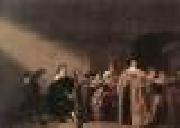 |
PALAMEDESZ, Antonie -- Click Here
|
|
Dutch Baroque Era Painter, 1601-1673 |
|
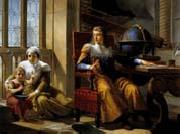 |
PALAGI, Pelagio -- Click Here
|
|
1775-1860 Italian painter, architect, designer and collector. At the age of 12 he began to frequent the house in Bologna of his patron Conte Carlo Filippo Aldrovandi Marescotti (1763-1823), whose collections and library provided his early artistic education and engendered his taste for collecting. From 1795 he worked on several decorative schemes with the theatre designer and decorator Antonio Basoli (1774-1848), and it was perhaps in theatre designs that Palagi was first exposed to an eclectic range of motifs from exotic cultures. He was influenced by the linear, mannered style of Felice Giani, with whom he frequented the important evening drawing sessions at the house of the engraver Francesco Rosaspina (1762-1841). Beginning in 1802, he participated in the informal Accademia della Pace, Bologna, as well as studying at the Accademia Clementina, and was elected to the Accademia Nazionale di Belle Arti of Bologna in 1803. Soon his draughtsmanship took on a bizarre, brooding style akin to that of Piranesi and such early Romantics as Luigi Sabatelli and Henry Fuseli. During this period he began designing funerary monuments, a type of commission that he continued to receive throughout his life. In 1805 he worked with Giani on the decorations of the Palazzo Aldini, Bologna. |
|
|
|
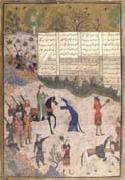 |
Painter Junayd -- Click Here
|
|
the period the 1465-1535
|
|
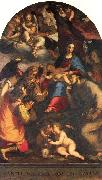 |
Paggi, Giovanni Battista -- Click Here
|
|
Italian Baroque Era Painter, 1554-1627
.Italian painter and theorist. As the son of a newly inscribed nobleman, he received a Renaissance gentleman's education, but as an artist he was it seems self-taught, despite the encouragement of Luca Cambiaso. The gentleman who then set up as a painter was obliged to give his work to patrons, sometimes expecting future remuneration; but when one patron reneged on payment in 1581, Paggi mortally wounded him and was banished from Genoa. He was given protection by Francesco I de' Medici, Grand Duke of Tuscany, and settled in Florence. A fresco of St Catherine Converting Two Criminals (1582), painted for Niccol? Gaddi's family chapel at S Maria Novella and thoroughly Florentine in manner, established Paggi's reputation at the Medici court. He painted ephemeral decorations, portraits (all untraced) and altarpieces for many Florentine churches and for the cathedrals of San Gimignano (c. 1590), Pistoia (1591-3) and Lucca (1597-8), |
|
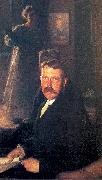 |
Page, Marie Danforth -- Click Here
|
|
American, 1869-1940 |
|
 |
Pagani, Gregorio -- Click Here
|
|
Italian, 1558-1605
Italian painter. He trained in the studio of the Late Mannerist Maso da San Friano, but then studied with the more progressive Santi di Tito. There he became friends with Ludovico Cigoli: the two artists, who desired to renew the art of painting, studied from nature and developed an interest in Venetian and Emilian art. Pagani was deeply influenced by Correggio. His earliest surviving works include the frescoes of the Confirmation of the Rule of St Dominic (c. 1580; Florence, S Maria Novella, Chiostro Grande) and the Meeting between SS Dominic and Francis (Florence, Convento dei Cappuccini di Monturghi). In 1592 he painted the Virgin and Saints (St Petersburg, Hermitage), a work that already reveals his interest in Correggio. In the same year he painted a Finding of the True Cross (untraced), a daring composition that is preserved in preparatory drawings. A number of works from the 1590s survive and show Pagani's interest in Emilian art; the Crucifixion and Saints (1595; Florence, S Bartolomeo in Pozzo) and the Virgin and Child with SS Michael the Archangel and Benedict (1595; Florence, S Michele Arcangelo Le Ville). At the turn of the century Pagani was increasingly associated with those Florentine artists who wished to develop a new narrative clarity and directness. His pictures (e.g. Pyramus and Thisbe; Florence, Uffizi) show figures carefully posed with varied expressions and gestures. In the early 17th century Pagani became yet more attracted by naturalism, as in the St Lawrence (1600) in the basilica of the Madonna delle Grazie at San Giovanni, Valdarno. Through his friendship with Bartolomeo Carducho he was influenced by Spanish art, as is evident in the Adoration of the Magi |
|
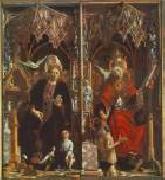 |
PACHER, Michael -- Click Here
|
|
Austrian Northern Renaissance Painter, ca.1430-1498 |
|
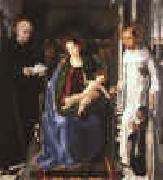 |
Pablo de San Leocadio -- Click Here
|
|
Italian-born Spanish Painter, 1447-ca.1520 |
|
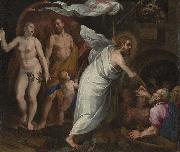 |
Pablo de Cespedes -- Click Here
|
|
(1538 - July 26, 1608) was a Spanish painter, poet, and architect.
His father, Alonso Cespedes, was descended of a noble Castilian family, once settled at Ocaña, and the name of his mother, who was a native of Alcolea de Torote, was Olaya de Arroya. Pablo was born and brought up in the house of his father's maternal uncle, Francisco Lopez de Aponte, Canon of Cordoba, where he received a learned education. At the age of eighteen, in 1556, he was sent to the Universidad Complutense in Alcale de Henares, and there, devoted himself to the acquirement of Oriental languages and theology. He later moved to Rome where he studied painting under Federico Zuccari.
He was in Rome in February 1559, engaged in conducting certain negotiations for the Archbishop Carranza de Miranda, of Toledo, who then stood charged with heresy before the Inquisition of Valladolid. On the 17th of that month he addressed a letter to the prelate, informing him how his business stood at the Vatican, in which he incautiously reflected on the conduct of the Inquisitor-General Valdez, and the Holy Officeean offence which no Inquisitor-General would forgive. This document and others were seized with the primate's papers; he was therefore denounced by the tribunal, and but for his fortunate absence, would have been imprisoned. It is probable that he did not venture back into Spain for many years, until he had covered his sins with the protecting robes of the Church.
He remained in Italy for over 20 years and built a reputation as an artist. His only surviving works from that period are the frescoes he painted in the Bonfili chapel at the Santa Trinite dei Monti church in Rome.
He returned to Spain in 1577, and was appointed as the canon of the Cerdoba cathedral. He continued to write books on antiquarian topics such as the architecture of the temple of Solomon. He befriended Arias Montano. In 1604 he composed his Discourse of Ancient and Modern Painting and Sculpture in which he recounts anecdotes of Renaissance masters of Italy.
|
|
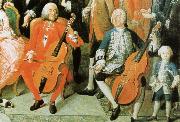 |
pablo casals -- Click Here
|
|
Catalan cellist and composer. He studied at Barcelona from 1887 and made his d??but there in 1891. After further study in Madrid and Brussels his international career began in 1899, when he played Lalos Concerto under Lamoureux in Paris. In 1905 he formed a trio with Thibaud and Cortot, recording works by Schubert and Beethoven. As a soloist Casals was renowned for his beautiful tone and intellectual strength. His playing did much to bring Bach's suites into the repertory. He formed the Orquestra Pau Casals in Barcelona in 1919 but his activities were curtailed by the Spanish Civil War. In 1950 at Prades he returned to music-making and later directed festivals at Perpignan and Puerto Rico. His many pupils included Guilhermina Suggia, with whom he formed a liaison. Casals wrote instrumental works and many choral pieces of a simple, devotional nature. |
|
 |
P.C. Skovgaard -- Click Here
|
|
(known as P.C. Skovgaard), (4 April 1817 - 13 April 1875), Danish national romantic landscape painter, was born near Ringsted to farmer Tham Masmann Skovgaard and his wife Cathrine Elisabeth. He is one of the main figures associated with the Golden Age of Danish Painting. He is especially known for his large scale portrayals of the Danish landscape.
The family had to leave the farm when he was six years old. They moved to Vejby in north Sjælland where his father earned his living as a grocer. Already as a young child he impressed his family with his artistic abilities. His mother, who had studied art under flower painter Claudius Ditlev Fritsch, gave him instructions in drawing until he was confirmed and could be sent to Copenhagen for training at the Royal Danish Academy of Art (Det Kongelige Danske Kunstakademi).
|
|
|
|
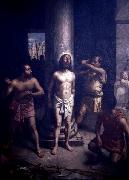 |
Oscar Pereira da Silva -- Click Here
|
|
(1867-1939 ) - Painter |
|
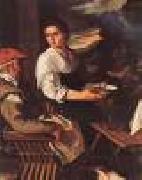 |
ORRENTE, Pedro -- Click Here
|
|
Spanish Baroque Era Painter, 1580-1645
Spanish painter. He is one of the most interesting artists of his day. His father, Jaime Orrente, was a merchant from Marseille, his mother, Isabel Jumilla, from Murcia. By 1600 Orrente was active in Toledo, where he was commissioned to paint a retable (untraced). In 1607 and again in 1611 he was in Murcia, and a journey to Italy recorded by Jusepe Mart?nez and Palomino must have taken place between those years. It seems certain that he visited Venice and met Leandro Bassano |
|
|